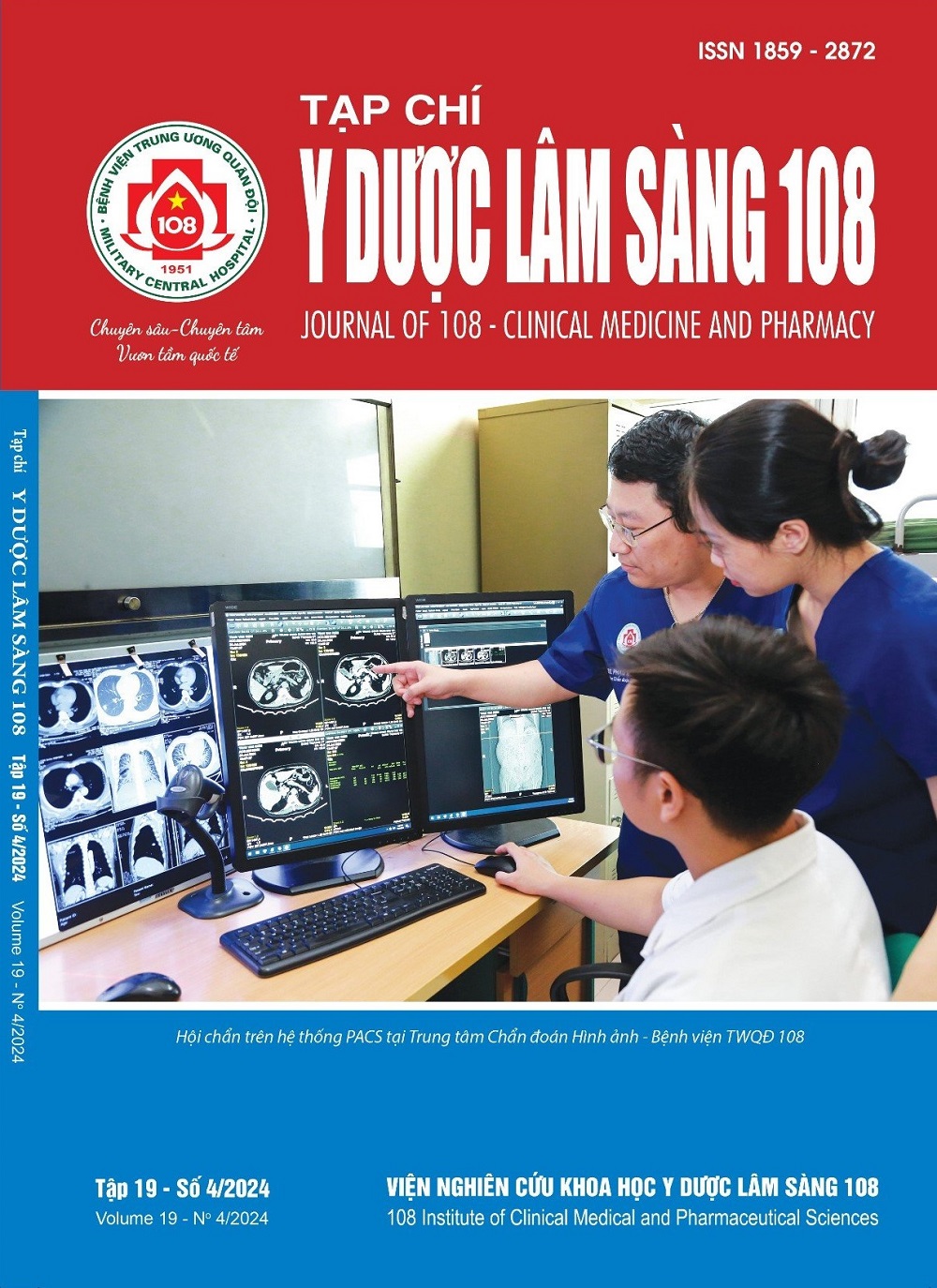Treatment results for chronic periapical periodontitis with chlorhexidine irrigation
Main Article Content
Keywords
Abstract
Objective: To review the treatment results of patients with periapical periodontitis (VQCMT) treated at National Hospital of Odonto - Stomatology of Ha Noi from April 2020 to April 2021. Subject and method: Clinical intervention study on 60 patients with 60 teeth with periapical periodontitis divided into 2 groups. Group I were irrigated with 2% chlorhexidine (CHX) combined with 3% sodium hypochlorite, group II were irrigated with sodium hypochlorite (NaOCl) 3%. Result: Percentage of successfully treated teeth after 1 week, after 6 months and after 12 months in group I were 93.33%, 86.67% and 93.10%. Percentage of successfully treated teeth of group II at the corresponding follow-up times were 90.00%; 83.67%, 89.66%. Percentage of successfully treated teeth after 1 year of treating periapical periodontitis with apical lesions ≤ 5mm: Group I (100%), group II (95.24%), percentage of successfully treated teeth after 1 year with apical lesions > 5mm: Group I (77.78%), group II (75%). Conclusion: Using a 2% CHX solution in the root canal irrigation process brings better treatment results than using only 3% NaOCl.
Article Details
References
2. Marion JJ, Campos F, & Mageste T (2012) Efficiency of different concentrations of sodium hypochlorite during endodontic treatment. Literature review. Dental Press Endod 2(4): 32-37.
3. Khademi AA, Mohammadi Z, Havaee A (2006) Evaluation of the antibacterial substantivity of several intra-canal agents. Aust Endod J 32: 112-115.
4. Rosenthal S, Spangberg L, Safavi K (2004) Chlorhexidine substantivity in root canal dentin. Oral Surg Oral Med Oral Pathol Oral Radiol Endod 98: 488-492.
5. Vianna ME, Gomes BPFA (2009) Efficacy of sodium hypochlorite combined with chlorhexidine against Enterococcus faecalis in vitro. Oral Surg Oral Med Oral Pathol Oral Radiol Endod 107: 585-589.
6. Bùi Thanh Tùng (2010) So sánh hiệu quả phương pháp điều trị nội nha một lần và nhiều lần ở răng tủy hoại tử và viêm quanh cuống mạn. Luận văn tốt nghiệp Bác sĩ Nội trú, Trường Đại học Y Hà Nội, tr. 4-9.
7. Hülsmann M, Rödig T, Nordmeyer S (2007) Complications during root canal irrigation. Endod Top 16(1): 27-63.
8. Rosenthal S, Spangberg L, Safavi K (2004) Chlorhexidine substantivity in root canal dentin. Oral Surg Oral Med Oral Pathol Oral Radiol Endod 98: 488-492.
9. Erdemir A, Ari H, Gungunes H, Belli S (2004) Effect of medications for root canal treatment on bonding to root canal dentin. J Endod 30: 113-116.
10. De Assis DF, Prado M, Simao RA (2011) Evaluation of the interaction between endodontic sealers and dentin treated with different irrigant solutions. J Endod 37: 1550-1552.
 ISSN: 1859 - 2872
ISSN: 1859 - 2872
